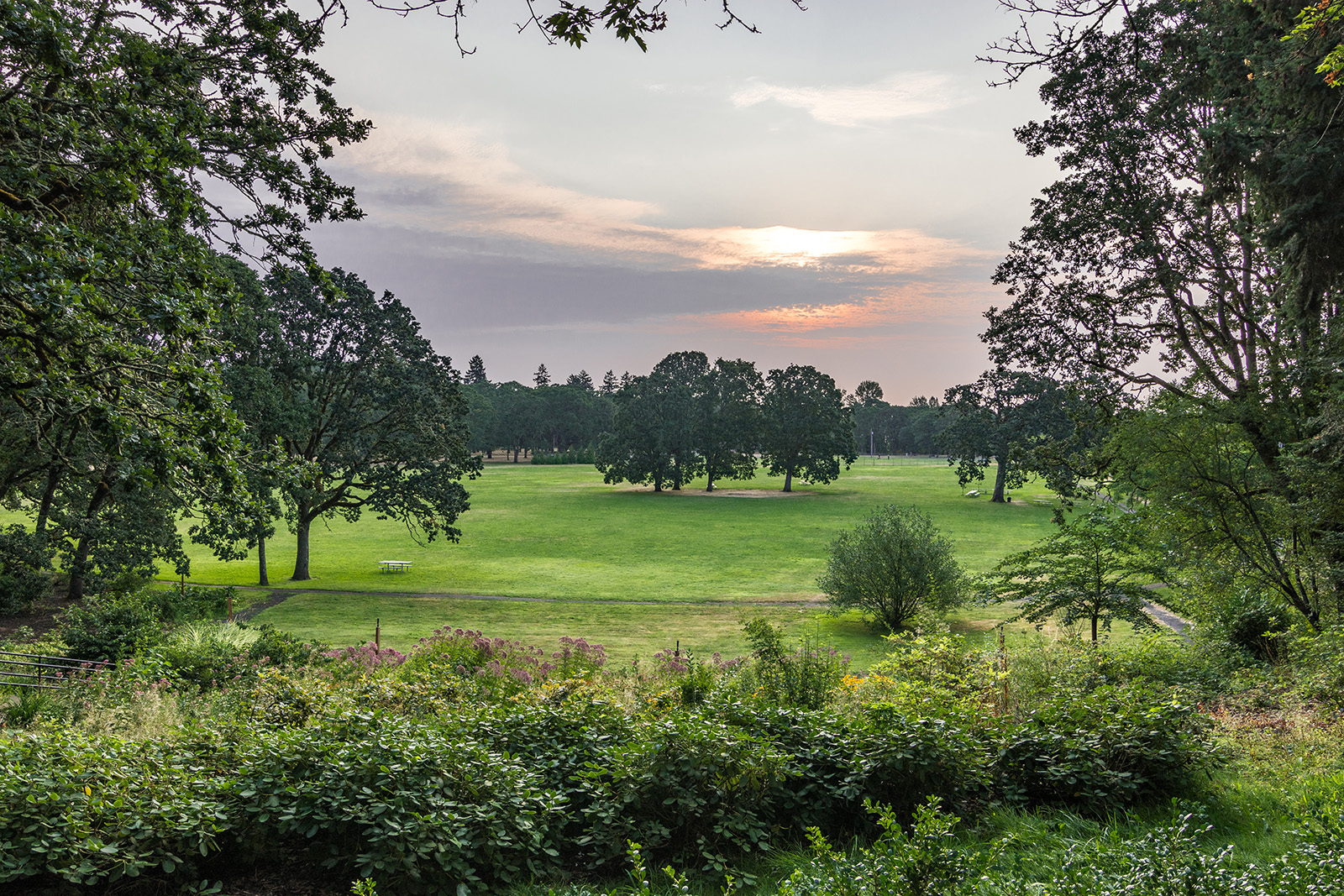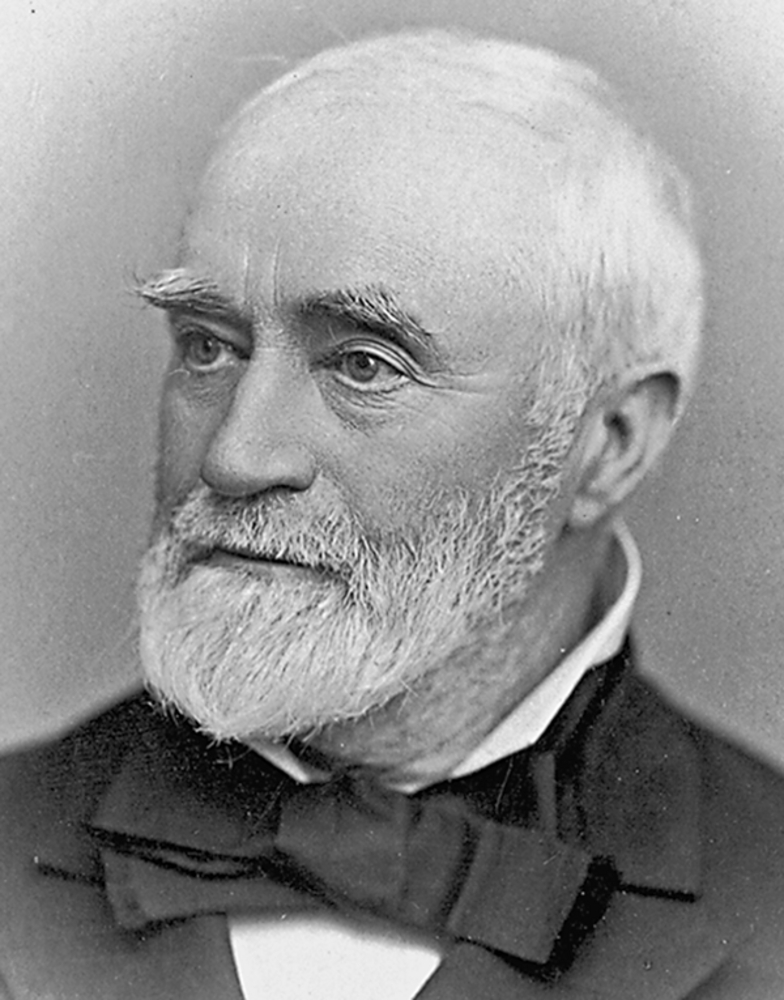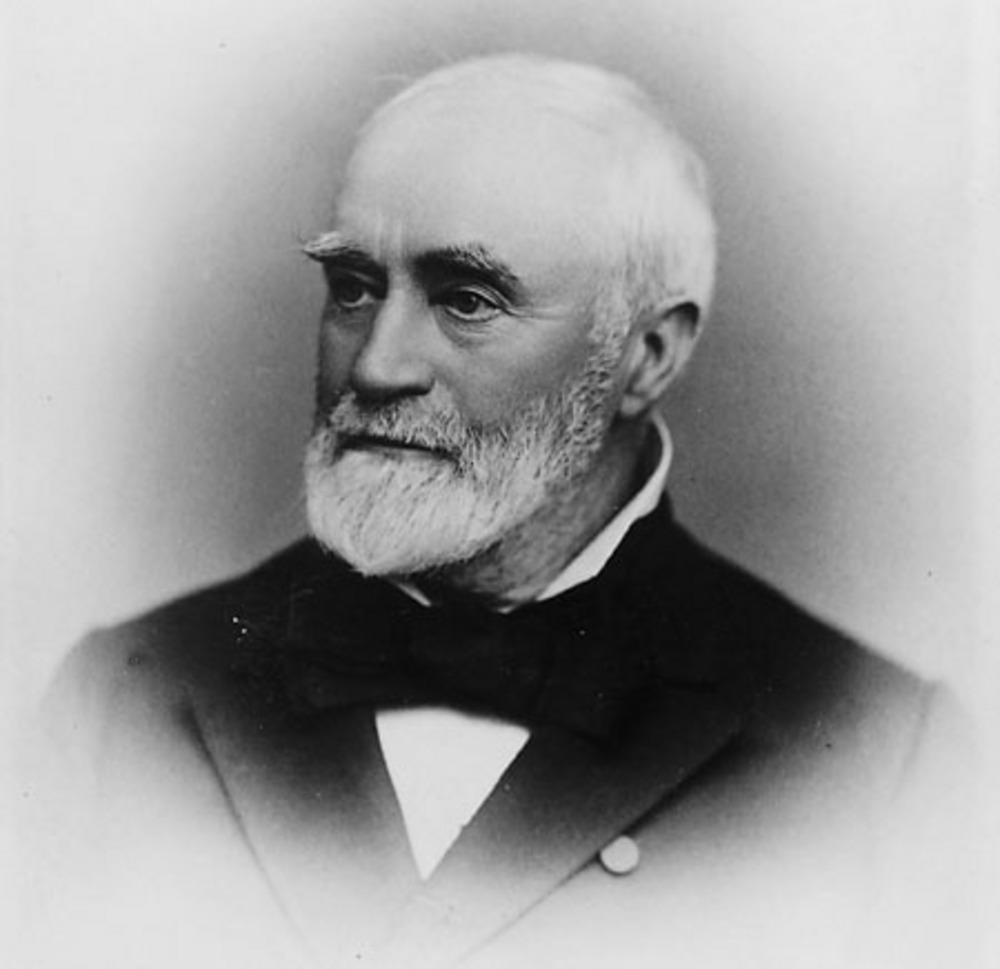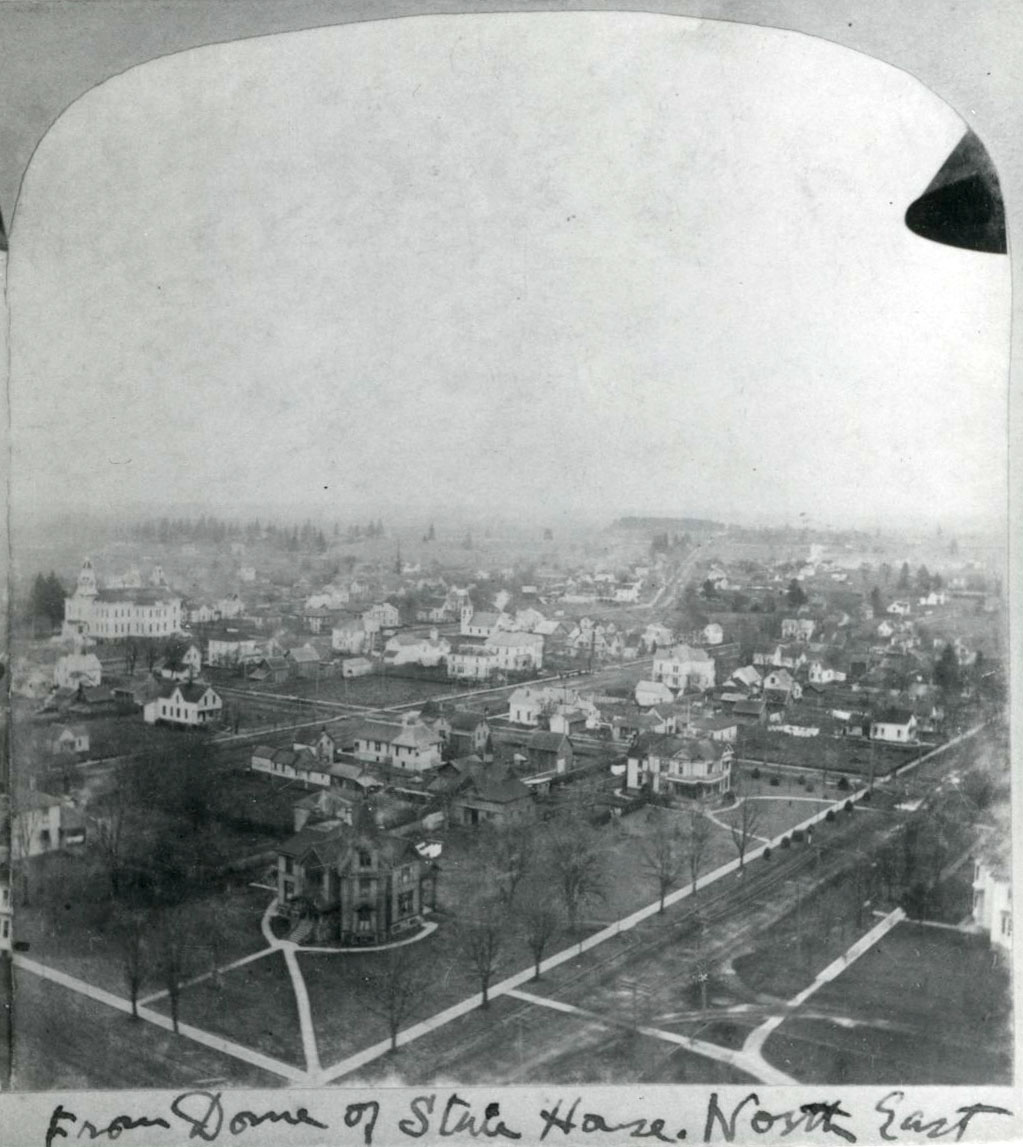Bush’s Pasture Park and the Bush Conservatory in Salem are part of the history of the settlement of Oregon; the park’s designation as a public space today serves as a tribute to the Asahel Bush family, their entrepreneurial ingenuity, and the tenacity of their supporters in the community.
Asahel Bush II (1824-1913) emigrated from New England through the Isthmus of Panama, arriving in Oregon City in 1850. He moved to Salem in 1853, where he met his future wife Eugenia Zieber (1833-1863), who had come to Oregon as a teenager on the Oregon Trail. They married in 1854 and purchased 100 acres of land at the southern boundary of Salem in 1860. The property was originally part of the great oak savannah that had sustained the Kalapuya people for centuries. By 1860, those 100 acres contained a simple frame house built by Reverend David Leslie (1787-1869) along with pastureland, orchards, oak groves, and fields of wildflowers.
Bush thrived as editor and publisher of The Oregon Statesman beginning in 1851, and the family soon included four children: Estelle (1856-1942), Asahel III (1858-1953), Sally (1860-1946), and Eugenia (1862-1932). Eugenia Bush (Bush’s wife) died of tuberculosis in 1863, and Asahel Bush sold the paper that same year. By 1869, he and Portland banker William Ladd had established the Ladd and Bush Bank, with branches in Salem and Portland.
In 1877, Bush began construction of a two-story Italianate house, located on top of a hill with a view of Salem and the Capitol building. Within a year, the house was finished, with a nearby barn and ice house.
The conservatory for daughters Sally and Eugenia was built in 1882 on the east side of the house. The structure included a single-stem brick wall topped with glass, heated by a wood stove. It is believed to be the oldest conservatory in the Pacific Northwest. Sally, who was a vegetarian, grew flowers, vegetables, and mushrooms in the conservatory.
In 1917, fifty-seven acres on the eastern boundary of the Bush property were donated to the City of Salem as a municipal park to honor Asahel Bush II; the family retained the western forty-three acres. In 1930, the conservatory underwent restoration. The Bush family installed a Moninger Iron Frame and Truss House (a kit), lengthening the original structure by eight inches. The City of Salem added a cold frame in about 1960.
A city bond measure in 1944 to purchase the forty-three remaining acres (for $175,000) failed, and plans were drawn by the city to put a major road through the center of the land. Willamette University purchased ten acres for McCullough Stadium, and the city purchased the remaining thirty-three acres, assuring the future of Bush’s Pasture Park.
With the death of the Bushes' last child, Asahel III, in 1953, the entire property passed to the City of Salem, which has operated the house as a museum since October 1953. The barn became an art gallery and community art center in the mid-1960s.
Bush's Pasture Park includes public rose gardens near the house, with some of the design work done by pioneer landscape architects Elizabeth Lord and Edith Schryver. There are also walking and running paths and playing fields.
The conservatory underwent an extensive renovation in 2010-2011, with funds raised by the Friends of Bush Gardens. Iron pieces and wooden beams were replaced, walls and foundation renovated, and a new boiler installed, all with a careful eye to maintaining the integrity of the structure. The conservatory, which is open to the public, stands near the family home in the park named for the family.
-
![]()
Bush's Pasture Park.
Courtesy City of Salem
-
![Aerial of Bush Pasture Park (center of image), 1947]()
Aerial of Bush Pasture Park (center of image), 1947.
Aerial of Bush Pasture Park (center of image), 1947 Courtesy Oreg. Hist. Soc. Research Lib., neg. no. 6403
-
![Asahel Bush]()
Asahel Bush.
Asahel Bush Oregon Historical Society Research Library ba017992
Related Entries
-
![Asahel Bush (1824-1913)]()
Asahel Bush (1824-1913)
Asahel Bush was a key figure during Oregon's formative years, using the…
-
![Asahel Bush House]()
Asahel Bush House
In 1878, Asahel Bush (1824-1913)—Oregon publisher, banker, and politici…
-
![City of Salem]()
City of Salem
Salem, the capital of Oregon, is located at a crossroads of trade and t…
Map This on the Oregon History WayFinder
The Oregon History Wayfinder is an interactive map that identifies significant places, people, and events in Oregon history.
Further Reading
Roberts, Don A. “Bush’s Pasture Park, The History of its Acquisition by the City of Salem.” Historic Marion 37:2 (Summer 1999): 1-4.
Wiederhold, Kathleen M. Exploring Oregon’s Historic House Museums. Corvallis: Oregon State University Press, 2000.









